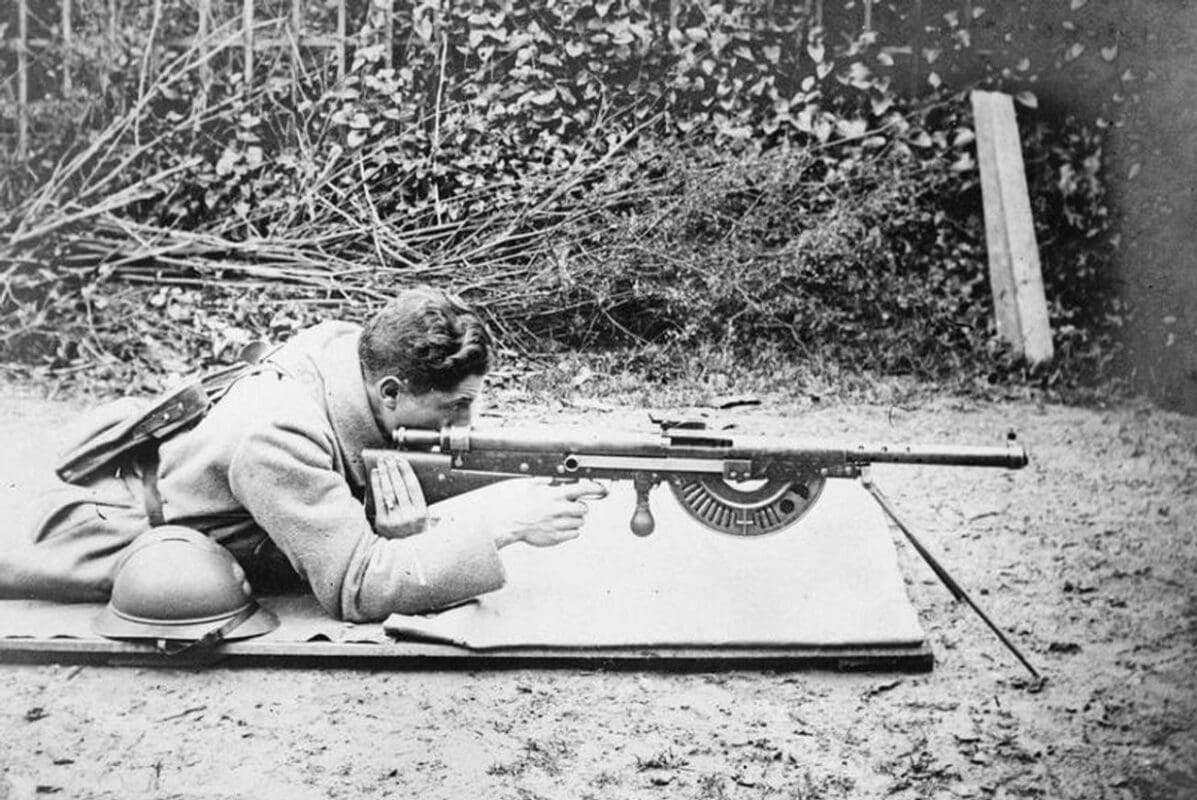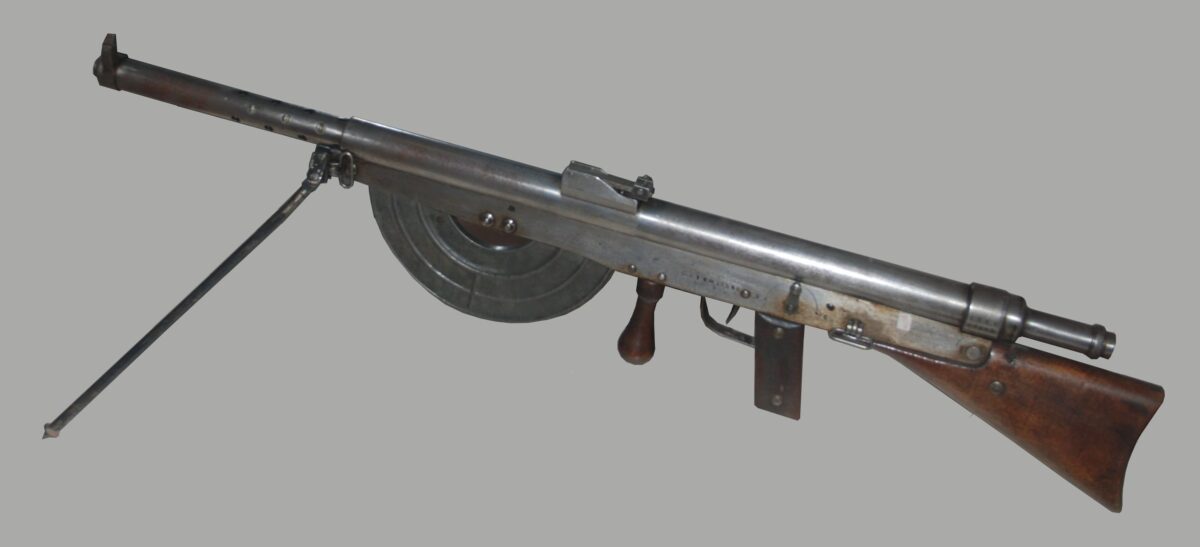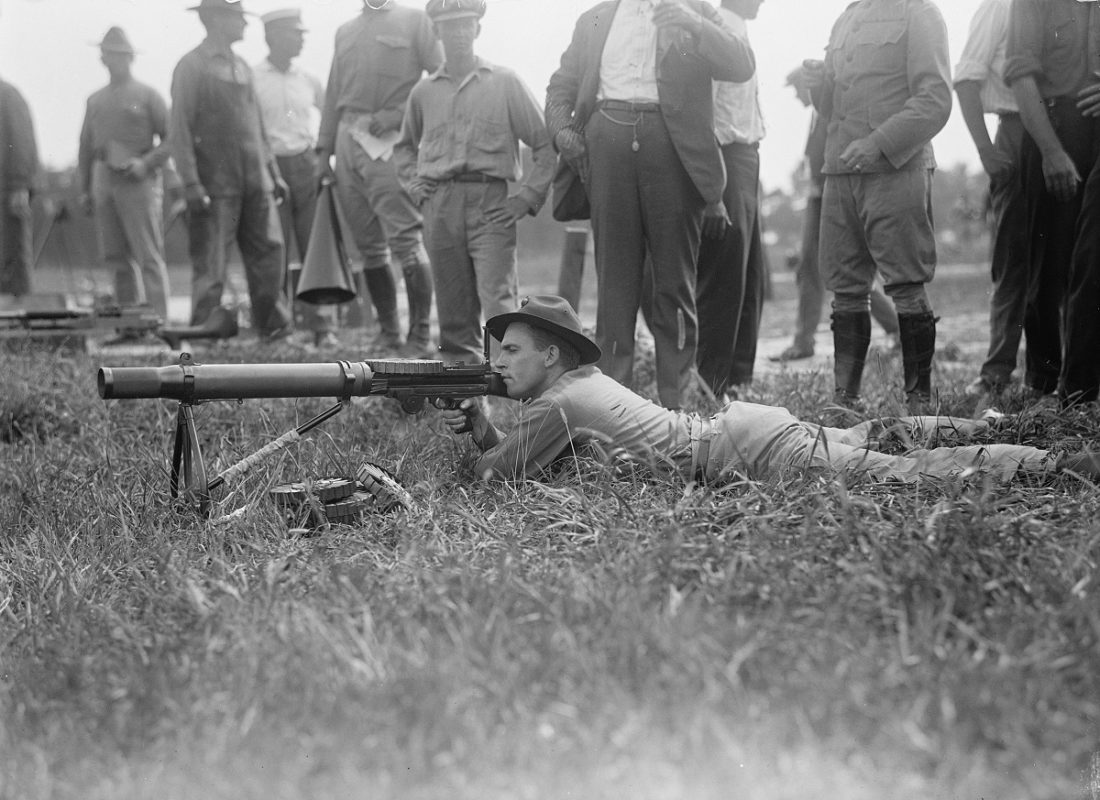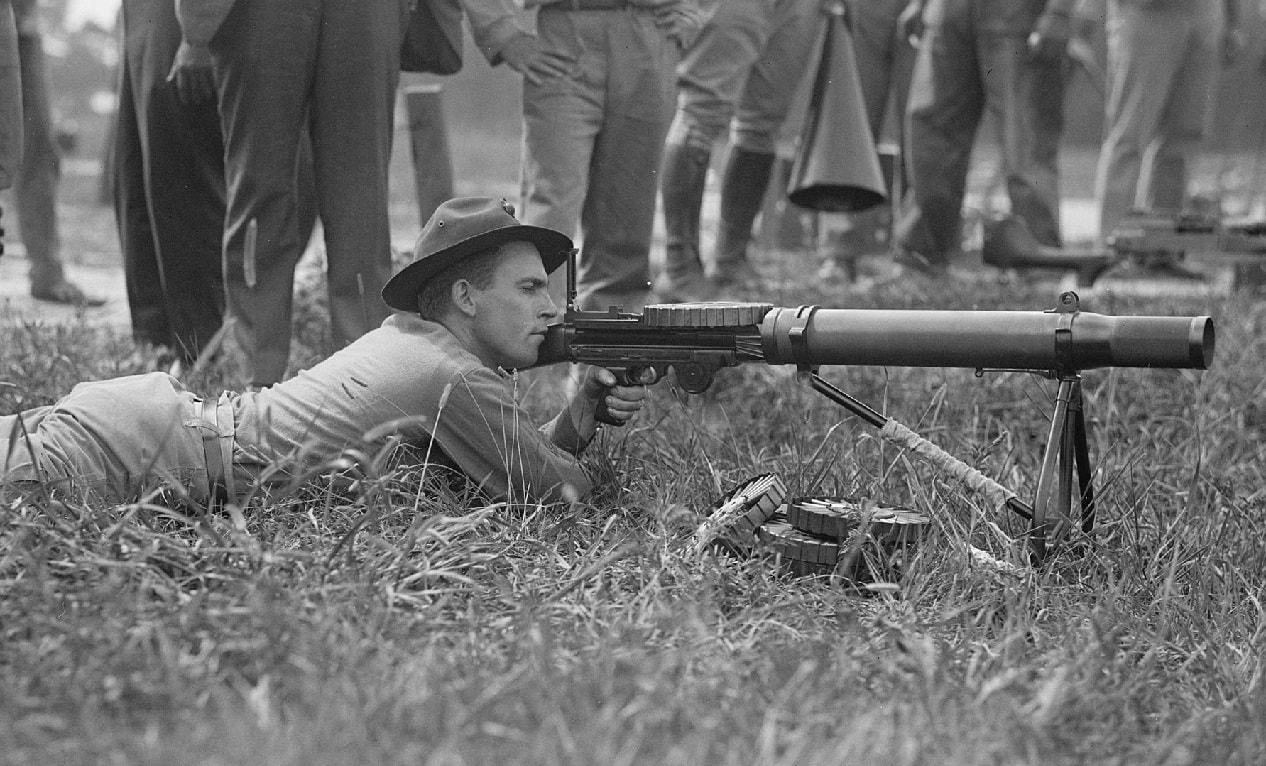5 Most Innovative Guns of World War I: The Second World War is often credited for its technological leaps forward including jet aircraft, rockets, radar, and of course the atomic bomb. However, World War I saw the first use of the automobile in combat, the first use of military aviation on a grand scale, and of course it was on the Western Front in 1916 that the tank made its debut.
Moreover, it was the First World War that saw a significant leap forward in firearms innovation and development. The bolt action rifle had already been in widespread use prior to the conflict, but it was the First World War that truly showed how the machine gun and automatic weapons could be employed. Five weapons, in particular, stand out as the most innovative of the war.
The French Chauchat
The first true “assault rifle” wasn’t created until the Germans developed the StG44/MP44 during the Second World War, but the French Chauchat could be seen as a proto-assault rifle. While the weapon has earned a dubious reputation, it is one that fails to consider its innovative features.
At the time the Chauchat – officially the “Fusil Mitraileur Modele 1915 CSRG” – was introduced, most machine guns weighed nearly 100 pounds with the mount, and even as lighter weapons made their debut none provided the “walking fire” that the Chauchat offered. It weighed just 20 pounds and could be fired from the hip. It also featured a pistol grip, in-line stock, detachable magazine and selective fire capability; all features standard in today’s assault rifles. It is time we show the Chauchat the respect it deserves.

Image: Creative Commons.

Image: Creative Commons.
The Lewis Gun
Many think this was a British design, but it was actually developed in the USA – yet, because of politics and some bad blood within the U.S. military it wasn’t adopted stateside. The British however liked what they saw and were quick to adopt it for frontline use. The gas operated machine gun had a rate of fire of 500-600 rounds per minute and it weighed 28 pounds, so it was heavy but still manageable and more mobile than the Vickers.
The Lewis Gun featured a distinctive wide tubular cooling shroud and a top-pan magazine, which has made it instantly recognizable. The gun played a key role in the first season of the period gangster series Peaky Blinders.

U.S. Marines field tested the Lewis machine gun in 1917.
The Browning Automatic Rifle (BAR)
When the American Expeditionary Force first went “Over There,” they had to rely on well-used Chauchats – which is likely why that gun has developed such a horrible reputation. Yet another factor is that the U.S. military was holding back what was arguably among the best guns developed in the war: The Browning Automatic Rifle.
Developed by prolific American gun genius John Browning, it only reached American soldiers in the closing months of the war. This first truly successful automatic rifle was equipped with a 20-round magazine, which enabled it to provide ranged support during an assault, while its bipod allowed it to double as a light machine gun. The BAR (always pronounced as B-A-R) went on to see action in World War II, Korea and even some early service in Vietnam. The weapon was also notably used by bank robbers Clyde Barrow and Bonnie Parker, which is especially noteworthy as Ms. Parker was reported to weigh just 90 pounds yet she was able to carry and fire the nearly 16 pound automatic rifle with ease!

Browning Automatic Rifle, 1936 FBI Training.
The MP18
The German military had attempted to “downsize” is MG08 machine gun by adding a bi-pod and shoulder stock. While more mobile than other medium/heavy machine guns employed during the war, it wasn’t ideal in an assault. But then Hugo Schmeisser went on to create the concept of “machine pistol,” or “maschinenpisole.” While working for the Bergmann Waffenfabrik firm Schmeisser, along with Theodor Bergmann, developed a new type of weapon. It was the Maschinenpistole 18/I, more commonly known as the MP-18.
It was truly too little, too late for Germany, but it made a big impact when it was used in the final stages of the war, and it was so successful in its design that it directly influenced later submachine guns. What made the MP-18, as it is now known, unique is that it featured an open bolt blowback action and fired pistol rounds.

It was originally designed to use the snail drum of the Luger Artillery model pistol, and this provided the soldier with 32 rounds of 9mm Parabellum. The downside to this however was that the shooter was required to have a special tool to reload the magazine. After the war the MP-18 was modified to use a straight magazine, which was later used in the MP-38/40 submachine gun. With Germany forbidden to manufacture the MP-18 after the war, production continued in secret and the weapon was improved in 1928, adding a selector for single shot as well as automatic fire. The MP-28 was subsequently used in World War II and even copied by the British as the Lanchester submachine gun.
The Mauser 1918 T-Gewehr
The First World War saw the introduction of tanks rolling across the battlefield, so fittingly it also saw the development of the first true anti-tank weapon: Germany’s Mauser 13.2mm Tank Abwehr Gewehr Model 18 or “Mauser 1918 T-Gewehr.” Known simply as the Tankgewehr, it was an upscaled bolt-action rifle that was based on the Mauser action.

Mauser 1918
However, unlike the Gewehr 98 – the standard service rifle used from 1898 to 1935, which featured an internal five-round magazine – the T-Gewehr was a single-shot weapon that had to be manually loaded each shot. It also differed from other rifles of the era in that it had a pistol grip and bipod. The massive rifle, which was five feet, seven inches in length, was chambered to fire a powerful 13.2 TuF (Tank und Flieger-Tank and Aircraft), a .525-caliber jacketed, armor-piercing, steel-core cartridge. The effective range was about 500 meters, but gunners had to fire over iron sights. It was a stopgap weapon, and only somewhat effective – yet it was innovative in that it showed that designers were already considering ways to counter armor vehicles.
Peter Suciu is a Michigan-based writer who has contributed to more than four dozen magazines, newspapers, and websites. He regularly writes about military small arms, and is the author of several books on military headgear including A Gallery of Military Headdress, which is available on Amazon.com. Peter is also a Forbes Magazine Contributing Writer.

